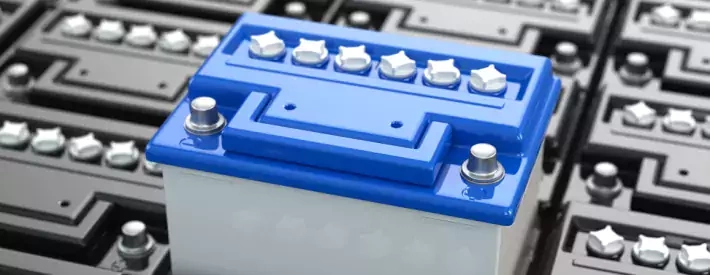How it works: 12V Battery

The most common battery used on vehicle is described as lead-acid. Two types of lead, when placed in sulfuric acid, produce electricity, which can be used and replaced (discharged and recharged). The basic construction of a lead-acid battery is six cells connected in series. Each cell producing approximately 2.1V (a 12V battery is actually a 12.6V battery). The latest and best options are known as active glass mat (AGM). There are three ways to describe the capabilities of a battery:
Ampere-hour capacity: describes how much current the battery is able to supply for 20 hours. A 44Ah will, if fully charged, supply 2.2A for 20 hours before being discharged.
Reserve capacity: is the time in minutes for which the battery will supply 25A at 25°C before being discharged. This is used to give an indication of how long the battery could run the car if the charging system was not working. A 44Ah battery will have a reserve capacity of about 60 minutes.
Cold cranking amps: indicates performance at high current output and at low temperature. A value of 170A means that the battery will supply this current for one minute at a temperature of −18°C before being discharged.
So what components come together to create a battery, well here they are:
Negative plates: Made from a pure sponge lead (Pb)
Positive plates: Made from lead peroxide (PbO2)
Posts, connections and grids: Made from lead (Pb) mixed with calcium (Ca). The calcium replaced antimony (Sb), and this causes less gassing of the electrolyte. This was one of the reasons why sealed batteries became feasible.
AGM: Absorbent glass mat, is an improved lead acid battery with higher performance than the common wet or flooded type. Instead of submerging the plates into liquid electrolyte, the electrolyte is absorbed in a mat of fine glass fibres. This makes the battery spill-proof and therefore can be transported without hazardous material restrictions.
Cells: The active material is held in grids or baskets to form the positive and negative plates. Separators made from a microporous plastic insulate these plates from each other.
Case: Consists of individual compartments within a polypropylene or similar material
Electrolyte: This is a diluted sulfuric acid (H2SO4).




